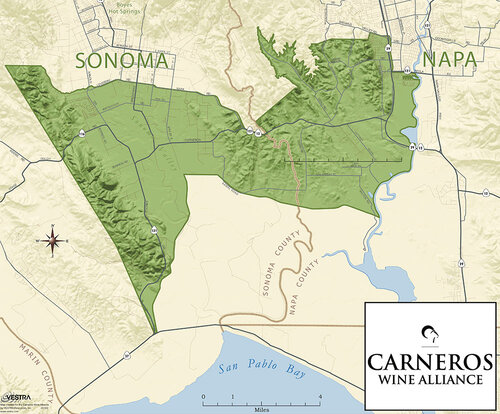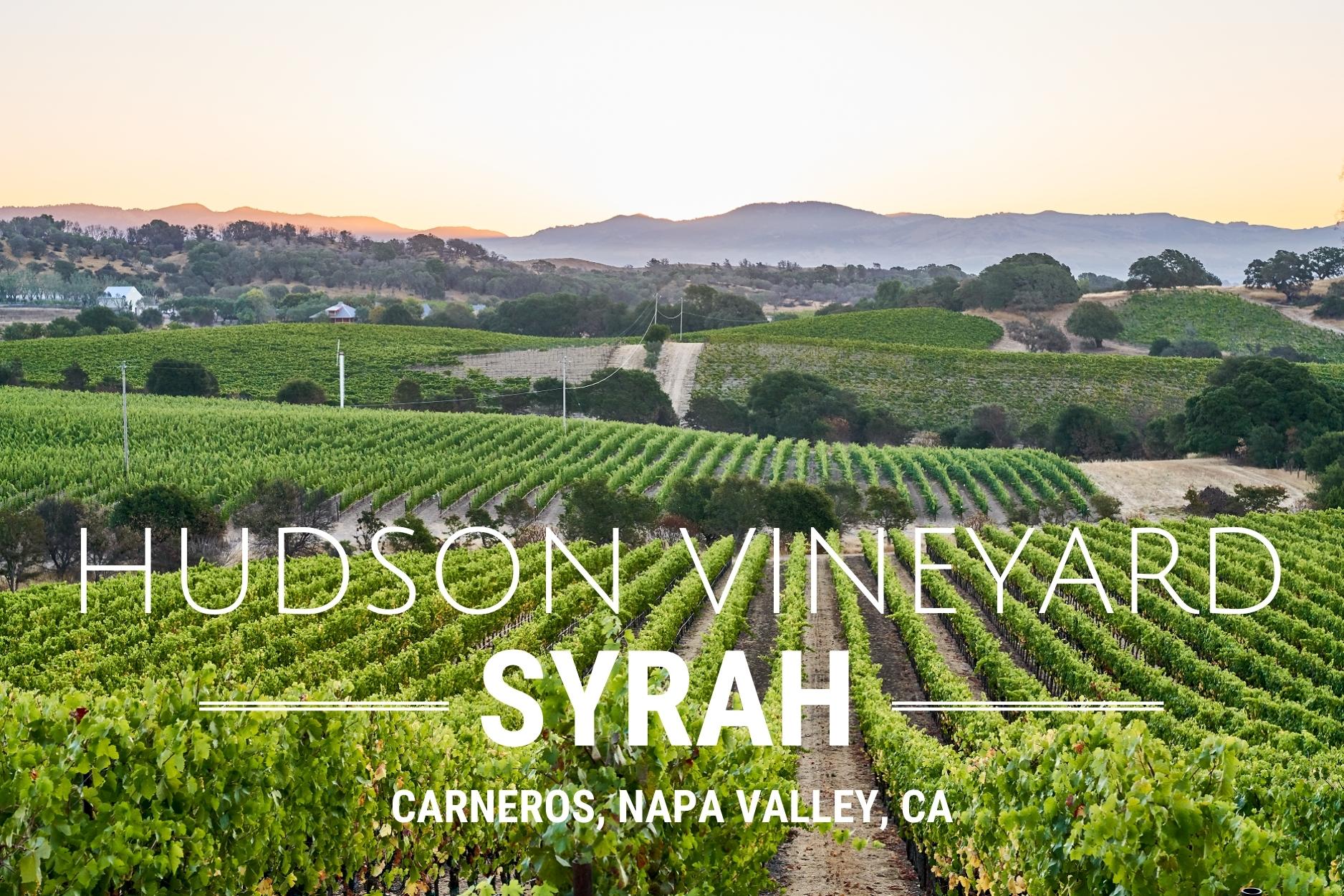If Cabernet Sauvignon is king in Napa Valley, then Syrah is the king’s wise old councilor, the only retainer allowed to enter the court unbidden. Syrah is one of the oldest known grape varietals planted today. Syrah is a wine-lover’s wine, to be sure. It is not as focused or as bright as Cabernet Sauvignon can be, but it can plumb the depths of flavor, with layers upon layers of subtly varied flavors, textures, and aromas. At the table, it is a chef’s delight, ready to pair with grilled game, roasted poultries, long-braised ragouts, and with the various “real” barbecues of any region of the Americas.

Photo credit: Carneros Wine Alliance
2020 Hudson Vineyard Syrah
“This wine exudes the essence of Syrah. The nose is expressive with orange peel, espresso roast, Spanish cedar, and hints of lilac with touches of smoked meats and bramble berry. The palate is complex with gorgeous red fruit and exotic spices. Flavors of raspberry, damson plum, dry porcini mushrooms, coriander, and cardamom lead to a long finish of savory pie crust that lingers around plush tannins.”
Carneros AVA
Two Valleys. One Distinct AVA.
As you move south down the Napa Valley, the landscape opens a bit into a combination of rolling hills and the estuarial wetlands of the Napa River as it flows into the San Pablo Bay. Temperatures here are moderated directly by the Bay influence, and maritime fogs often provide morning cover. To the east of the Napa River this area is known as Coombsville. To the west it is known as Los Carneros, the only viticultural appellation which spans both Napa and Sonoma.
Like the rest of the Napa Valley, the soils of Los Carneros are a patchwork mosaic of ancient landslides, creek beds, uplifted sea floors, and alluvial flows, with the occasional volcanic activity thrown in. Perhaps even more than the up-Valley regions, the meso-climates of Carneros change subtly and quickly, as the sea breezes are bent around hillsides and through creek beds and discharged into rolling valleys. Lee and his farming team have meticulously planted an impressive selection of grape varietals and clones throughout his ranch’s various hillsides and valleys, matching grape to terroir.
Hudson Ranch & Vineyards
Since 1981, this is where Lee Hudson has been quietly planting vineyards and olive groves, producing farm plots and flowers, all with an eye on sustaining the land for future generations. Interplanted with his commercial crops is an impressive array of permanent cover crops, native grasses, and trees. All of this promotes soil health and the health of native bird and insect populations as well. The vineyard rows are impeccably farmed, creating a visual impression of passionate care and concern in the midst of natural beauty.
We pick Syrah from a three-acre plot located on the higher, backside of Lee’s ranch. The hills here are a bit steeper, describing a sort of canyon. At the bottom, Carneros Creek winds its way toward the Bay. The southern banks of the creek rise steeply into a wall-like ridge of hills protecting the bench on the northern banks from the wind. The Syrah enjoys a long, even-tempered growing season and ripens slowly, with sugars developing in a lockstep rhythm with the flavor development in the skins. The result is a savory, textural Syrah with a compelling complexity.



OMG, love at first sight. The color is amazing garnet, (my birthstone!). I opened the 2021 after making and tasting a powerful basil and cilantro pesto full of garlic, olive oil, lemon & walnuts, so I wondered how that would affect the Syrah’s first taste. It was the perfect compliment of complex fruit flavors against the herbs! No wonder you mentioned “it is a chef’s delight”. It simply dances with flavor. Best Syrah yet. Thanks, Lee and thanks, Kirk! Amazing.